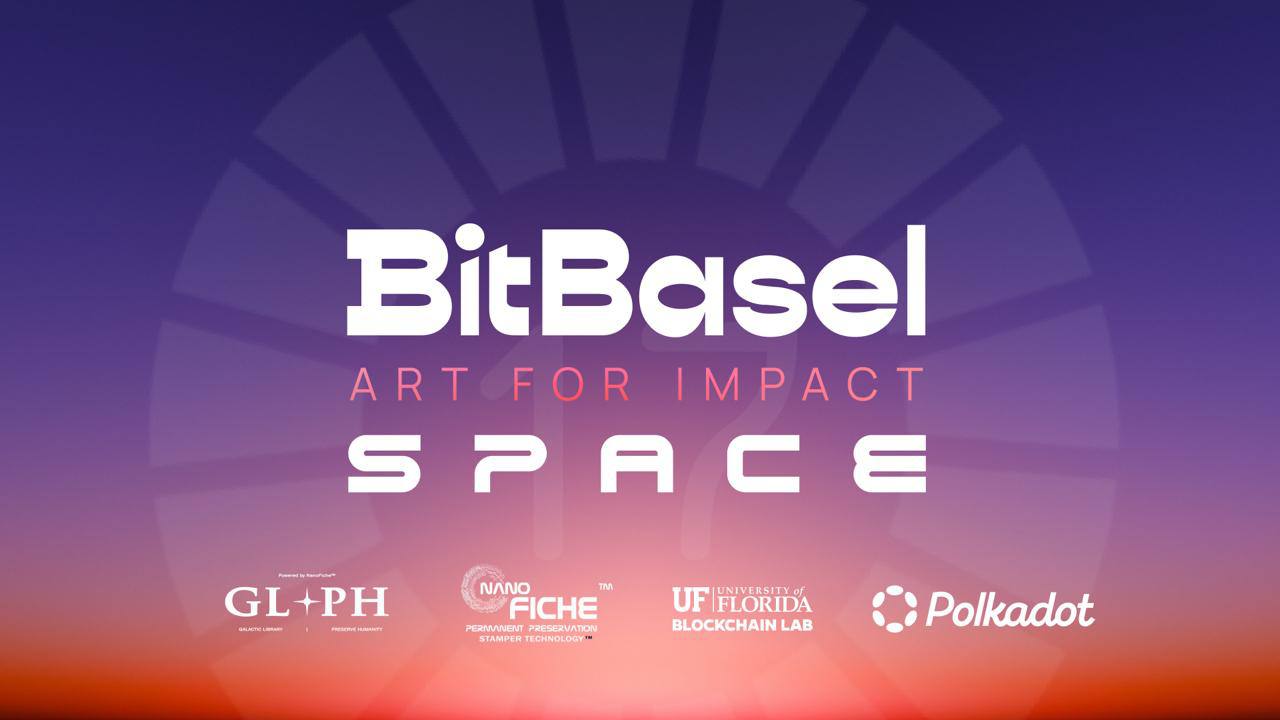Polkadot officially becomes part of “Art for Impact”, the ambitious space program promoted by BitBasel to bring to the Moon an art collection dedicated to the 17 Sustainable Development Goals (SDG) of the United Nations. The initiative aims to leave a permanent testimony of human ingenuity, preserving selected visual works thanks to cutting-edge space technology.
An art archive destined to last billions of years
The project, part of the GLPH (Galactic Library Preserve Humanity), involves sending an artistic collection on the next lancio lunare Griffin-1, managed by Astrobotic and supported by the Commercial Lunar Payload Services (CLPS) program of NASA. The selected works will be imprinted on Nanofiche, a medium resistant to the extreme conditions of space, ensuring conservation for billions of years on the lunar surface.
Polkadot unites blockchain and sustainability
With its participation in the initiative, Polkadot, one of the most sustainable and advanced Web3 blockchains, strengthens the connection between technology, art, and social impact. The protocol will help mobilize digital artists from around the world, promoting the creation of works that reflect on global themes related to the SDG, such as climate change, quality education, gender equality, clean energy, and sustainable innovation.
“With the support of Polkadot, we are expanding the reach of the mission in the Web3 ecosystem and beyond. The Moon is the canvas, and together we are sending a message: art can inspire action and leave a legacy,”
stated Scott Spiegel, CEO and co-founder of BitBasel.
A unique opportunity for artists from all over the world
BitBasel has launched a global call inviting artists to submit visual works inspired by the SDGs. The creations can be digital, photographic, illustrations, paintings, or mixed techniques, as long as they can be represented as still images.
The selected works will be sent into space with a SpaceX rocket by the end of the year. The included artists will be officially recognized as part of this historic cultural and space mission.
A multidisciplinary curatorial committee
The selection of the works will be entrusted to a jury composed of experts from BitBasel, Polkadot, GLPH, and the University of Florida Blockchain Lab. The committee will evaluate the proposals based on originality, visual impact, and ability to represent the values of the 17 Sustainable Development Goals.
This multidisciplinary collaboration unites the academic, technological, and artistic worlds, with the aim of stimulating a global reflection on the urgency of addressing the challenges of our time.
Nanofiche Technology: the art that defies time and space
At the center of the mission is the use of Nanofiche technology, specifically developed for the preservation of content in space. This medium allows for storing data in visual format on a material capable of withstanding vacuum, radiation, and extreme temperatures, making it ideal for long-term projects beyond Earth.
The lunar archive will not be physically accessible, but it will represent an eternal symbol of humanity’s creativity and values, safeguarded in one of the most inhospitable and mysterious places in the solar system.
BitBasel: art, blockchain, and technology at the service of culture
Founded in Miami in 2020, BitBasel is a pioneering platform that operates at the intersection of art, blockchain, and immersive experiences. Its mission is to “pioneer the future of art” through unique initiatives such as digital exhibitions, global educational programs, and now, even lunar missions.
With “Art for Impact”, BitBasel once again demonstrates the potential of blockchain to convey wide-ranging cultural and social projects, leveraging decentralization to promote participation and inclusivity.
Polkadot: blockchain infrastructure at the service of human creativity
Polkadot stands out for its modular architecture, which allows developers to create specialized blockchains, interoperable with each other. The system ensures shared security and decentralized governance, making it one of the most robust protocols in the Web3 landscape.
Thanks to its efficiency and low environmental impact, Polkadot is particularly suited to support sustainable initiatives like BitBasel. Participation in “Art for Impact” strengthens the protocol’s positioning as a driver of social and cultural innovation, as well as technological.
The Moon as a witness of digital humanity
“Art for Impact” represents a turning point for the interaction between art, technology, and space. The involvement of Polkadot and BitBasel in this mission marks a historic step: artistic expression as a means to leave a universal message on the Moon.
In an era dominated by technology, this initiative invites us to reflect on how creativity can become memory, carrying with it fundamental values such as sustainability, equality, and innovation.
Will this archivio lunare truly inspire future generations? Or will it be just a silent symbol in a remote landscape?
One thing is certain: the impact of art today is aiming straight for the stars.
